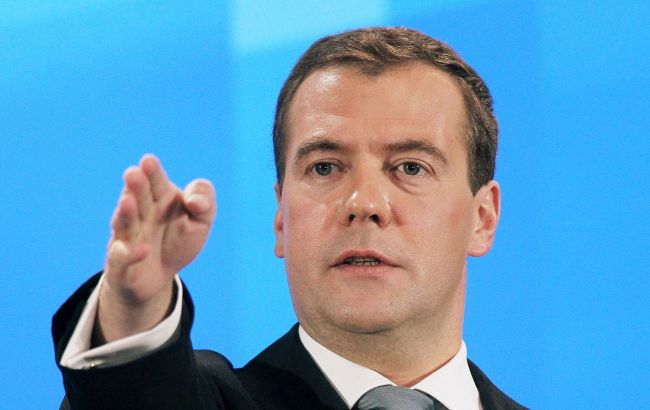True cost of Medvedev’s buffer zone - 91 years of war and third of Russia affected
 Dmitry Medvedev, Deputy Chairman of the Security Council of Russia (Photo: Getty Images)
Dmitry Medvedev, Deputy Chairman of the Security Council of Russia (Photo: Getty Images)
The creation of the so-called buffer zone announced by Medvedev appears to be a bloody fantasy with no chance of success. The Russians have virtually no chance of capturing the entire territory of Ukraine, reports the American Institute for the Study of War (ISW).
The report states that, at the current pace of the offensive and current rates of personnel losses, it would take the Russian military about a century to capture the buffer zone proposed by Dmitry Medvedev, Deputy Chairman of the Russian Security Council. At the same time, total losses in this campaign could reach around 50 million people.
The ISW reminded that from January 1 to May 24, 2025, Russian forces advanced an average of about 14.3 square kilometers per day across the territories of Ukraine and Russia. At this rate, it would take them approximately 3.9 years to capture the remaining territories of Donetsk, Luhansk, Zaporizhzhia, and Kherson regions, and about 91 years to capture the buffer zone proposed by Medvedev, which covers 587,459 square kilometers of Ukrainian territory.
The report reminded that on February 21, analysts from the Institute estimated that Russia would need 83 years to capture the remaining 80% of Ukraine’s territory at the then-current pace of the offensive. This indicates a slowdown in Russian advances from February to May 2025.
In a May 24 article by The Washington Post, current and former Western officials noted that over the past year (since mid-2024), Russian forces have been losing an average of 1,500 soldiers daily. This means that if the current rate of losses continues over the 91 years needed to establish Medvedev’s proposed buffer zone, total casualties in such a campaign could reach nearly 50 million people, which is roughly one-third of the current population of Russia.
Challenges and obstacles
The ISW noted that these expert assessments are based on the assumption that Russian forces will be able to maintain their current pace of advance, and do not take into account several geographic and defensive barriers that the Russian army will have to overcome to capture the remaining 80% of Ukraine’s territory.
Specifically, to overcome the mentioned barriers, the Russians will have to:
- Break through the fortified system of large cities forming a strong defensive line in the Donetsk region (Kostiantynivka, Druzhkivka, Sloviansk, Kramatorsk);
- Cross the Dnipro River and recapture Kherson;
- Conduct an amphibious landing operation in the Black Sea to seize footholds in the Odesa region;
- Regain control over the cities of Sumy and Kharkiv, as well as capture Kyiv and other major cities in central and western Ukraine.
Analysts reminded that the Dnipro River is a natural obstacle between the current Ukrainian and Russian positions in the Kherson region and has served as a frontline since Ukrainian forces liberated this territory in 2022.
Additionally, the report reminds that in the first months of the war, Russian forces failed to achieve many of these objectives, and since capturing Bakhmut in May 2023, they have not taken control of any major city.
"Russian forces have not demonstrated the ability to conduct the kind of rapid, multi-directional offensive operations necessary to accomplish these goals since early 2022 and are unlikely to significantly improve their abilities in the near future given that advancing roughly 65 square kilometers constitutes a significant success in a priority frontline area at this stage of the war," the Institute for the Study of War concludes.
Buffer zones of the Kremlin
On Thursday, May 22, Russian President Vladimir Putin announced a decision to create a necessary security buffer zone along the state border.
He did not provide specific details, but Kremlin media suggested that this refers to the border regions of Bryansk, Kursk, and Belgorod, which adjoin Ukraine’s Chernihiv, Sumy, and Kharkiv regions.
Later, Viktor Sobolev, a member of the State Duma Defense Committee, stated that the so-called buffer zone is supposed to cover as many as six Ukrainian regions.
On Sunday, May 25, Dmitry Medvedev, Deputy Chairman of the Russian Security Council, stated that by the buffer zone, Putin apparently meant almost the entire territory of Ukraine. Medvedev released a video showing a red map covering the entire territory of Ukraine, except for a small enclave along the Ukrainian-Polish border.
For more details on how many times Putin mentioned the buffer zone and how Ukraine reacted, read the article by RBC-Ukraine.

